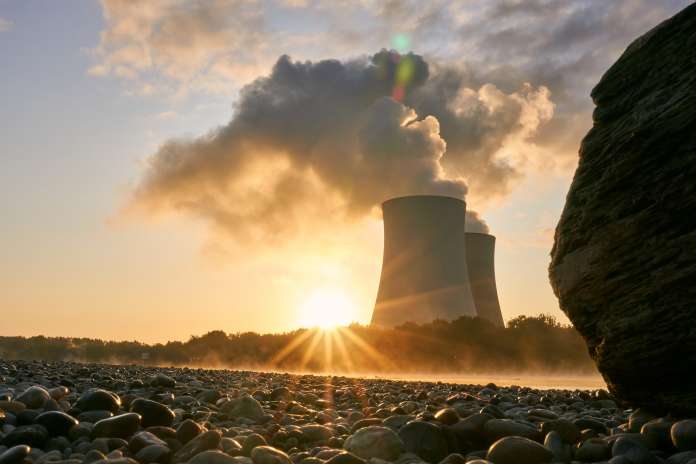A new technology brief from the United Nations Economic Commission for Europe (UNECE) underlines that nuclear power can be seen as part of a broader portfolio alongside deploying other sustainable low- or zero-carbon technologies to decarbonise the global energy system and energy-intensive industries to deliver on the Paris Agreement and the 2030 Agenda for Sustainable Development.
The report highlights that nuclear power avoided about 74 gigatonnes (Gt) of carbon dioxide (CO2) emissions over the past 50 years, nearly two years’ worth of total global energy-related emissions.
Nuclear power currently provides 20 per cent of electricity generated in the UNECE region and 43 per cent of low-carbon generation. The time is running out to rapidly transform the global energy system as fossil fuels still account for over half of electricity generation in the UNECE region. According to UNECE, nuclear power has the potential to increase its integration with other low-carbon energy sources in a future decarbonised energy mix.
“For those countries who choose to implement this technology, nuclear power is an important source of low-carbon electricity and heat that can contribute to attaining carbon neutrality and hence help to mitigate climate change and attain the 2030 Agenda for Sustainable Development,” said UNECE Executive Secretary Olga Algayerova.
Nuclear power gains new momentum in CEE
In the UNECE region, nuclear power is an active part of the energy system, providing over 30 per cent of electric generation in eleven countries, which also includes Bulgaria, Czech Republic, Hungary, Slovakia, Slovenia, and Ukraine. Twenty countries currently operate nuclear power plants, and fifteen countries have new reactors under construction or under development.
A number of countries have explicitly stated that nuclear power will play an important role in reducing their national emissions in the future, from the CEE region the Czech Republic, Finland, Hungary, Poland, Romania, Slovakia, Slovenia, Russia and Ukraine have concrete plans involving nuclear power generation.
Poland for instance has so far experienced slow progress in introducing nuclear energy but aims to construct the country’s first nuclear power station by 2033, with six operational blocks across four locations by 2040. The total capacity of these nuclear facilities will be 6-9 GW, with construction planned to start in 2026.
Romania also plans to keep nuclear in its energy mix, planning to build two new units of its Cernavoda NPP, which is considered to be a necessity for the country to meet its energy needs after 2030. The expansion of the Krsko NPP in Slovenia with a proposed second reactor also just received the green light, which opened the way for the preparation of the project. Nuclear power has been identified in these countries’ long-term strategies identifies as a long-term energy option.
Technology options and applications
There are three main classes of nuclear reactor technology: large gigawatt-scale reactors, small modular reactors (SMRs), and microreactors. Large reactors are mature technologies that are commercially available today. SMRs have designs rapidly approaching commercial deployment and one such plant operating off the north coast of Russia provides combined heat and power to remote communities.

The UNECE report notes that as nuclear power plants produce both low-carbon electricity and heat, they also offer opportunities to decarbonise energy-intensive industries. For example, there is potential to scale up low or zero-carbon steel, hydrogen, and chemical production to decarbonise hard-to-abate sectors.
One of the major questions regarding nuclear power is the high up-front capital costs ranging from 5 to 10 billion US dollars for large nuclear power plants. The report underlines that low-cost financing and market frameworks could lessen this burden and nuclear power could become a cost-competitive option for generating electricity in many parts of the world. Additionally, according to the report, future small scale microreactors and SMRs are likely to be easier to finance and support technology interplay with variable renewable energy.
In the meantime, the EU is divided over the future of nuclear energy with ongoing debates on whether to include nuclear energy in the delegated act of the European taxonomy or not. At the end of July, 18 trade unions from 10 countries said nuclear energy must be included in the EU taxonomy to build an economically efficient and socially just carbon-free Europe by 2050. At the same time, a group of five EU member states led by Germany sent a letter to the Commission asking for nuclear energy to be kept out of the EU’s green finance taxonomy arguing that it would undermine its credibility. Back in March, the Commission’s in-house scientific body, the Joint Research Centre, released its report concluding that nuclear power is safe and qualifies for a green investment label under the EU’s green finance taxonomy, this could significantly lower the cost of new nuclear projects and potentially lead to a renaissance of nuclear power in Europe.



